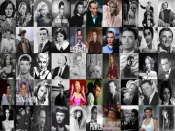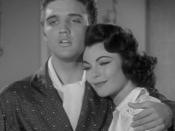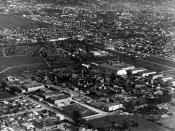I am not a scholar of feminism, but I believe that any such movement such as feminism must have seminal images in the popular imagination to become a popular movement. The popular imagination, here, consists of what its mass media produce. A member of the populous can see the media how she likes, as fascist dictators of the imagination or as an anarchic self governed pool of imagery to add to and take from as they want. Both are useful points of view and not the only points of view. In the nineteen-fifties a large part of the media was Hollywood. The nineteen-fifties was a period of transition in Hollywood. Among the most important transitions that took place in Hollywood in and around that decade was in how women were represented in film.
There have always been powerful and independent women but it wasn't until the nineteen-fifties that an image of such a woman was accessible to anyone who could go to a movie theatre.
In the U.S. this meant that the young girls of the baby boom generation, or the archetypal frustrated house wives of the fifties could spend their weekly allowances to consume the latest Hollywood creations. Whether they lived in the cities, the suburbs, small towns, or made the trip into town from the diminishing and distant rural regions, women and men alike would consume the images placed before them on screen. In many ways, much as they do today. In some films of the fifties the portrayal of women was as oppressive to the desires and needs of women as they always had been. The protagonist was a patriarchal male and a women purpose were always subordinate to him and his desires. Into the early fifties the Hayse code, Hollywood's a self imposed censorship code, dictated...



Comment
I thought that the introduction needed work. I didn't want to keep reading it after that, but the paper was actually good & interesting.
5 out of 5 people found this comment useful.